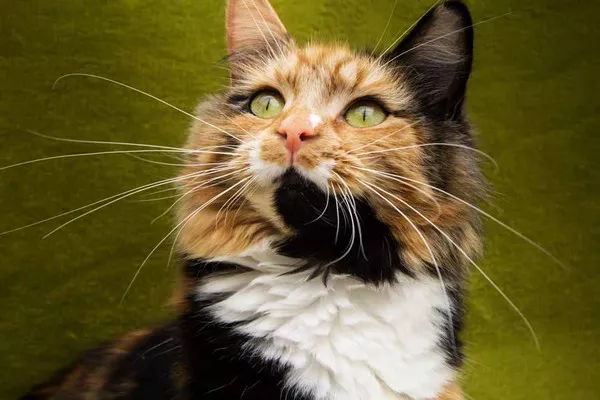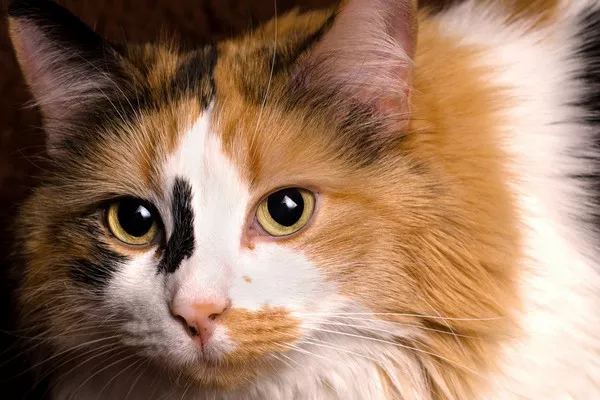Calico cats, with their distinctive tricolor coats, captivate the hearts of cat lovers with their unique and vibrant patterns. Grooming is an essential aspect of caring for your calico cat, ensuring their coat remains healthy, shiny, and free from tangles. In this comprehensive guide, we will explore the intricacies of grooming your calico cat, understanding their coat characteristics, introducing grooming tools, and establishing a grooming routine that strengthens the bond between you and your feline companion.
Understanding the Calico Coat
Color Variations:
Calico cats are renowned for their beautiful tricolor coat patterns, typically combining black, orange, and white fur in a mosaic-like design. The distribution of these colors varies, resulting in each calico cat having a unique and eye-catching appearance.
Black, Orange, and White: The classic calico coloration features bold patches of black, orange, and white fur, creating a striking contrast.
Dilute Calico: Some calico cats display a dilute version of the traditional colors, with softer shades of gray, cream, and lighter orange. The dilute calico coat has a more pastel and muted aesthetic.
Longhair and Shorthair Varieties:
Calico cats come in both longhair and shorthair varieties, each requiring specific grooming considerations.
Longhair Calico: Longhair calico cats boast luxurious and flowing coats that demand more extensive grooming to prevent matting and tangling. Regular brushing is essential to maintain the health and appearance of their dense fur.
Shorthair Calico: Shorthair calico cats have shorter coats that are generally more manageable but still benefit from regular grooming to remove loose hair and maintain skin health.
Grooming Tools for Calico Cats
1. Slicker Brush:
Purpose: Slicker brushes are highly effective in removing loose fur, preventing matting, and stimulating the skin. They consist of fine, short wires close together, making them suitable for both longhair and shorthair calico cats.
Usage: Gently brush the calico cat’s fur in the direction of hair growth, paying particular attention to areas prone to matting, such as the chest, belly, and behind the ears. Be cautious not to apply excessive pressure to avoid causing discomfort.
2. Comb:
Purpose: Combs, especially those with both wide and narrow teeth, are valuable for detangling and removing loose hair. They are particularly useful for longhair calico cats to prevent matting in their dense fur.
Usage: Use the comb to carefully work through any knots or tangles in the cat’s fur. Begin with the wider teeth and progressively switch to the narrower ones as needed. Take your time to avoid causing stress to the cat.
3. Bristle Brush:
Purpose: Bristle brushes, equipped with soft and natural bristles, are suitable for giving the calico cat’s coat a smooth and polished appearance. They help distribute natural oils and remove loose hair.
Usage: Brush the cat’s fur gently in the direction of hair growth, focusing on the back and sides. Bristle brushes are particularly effective for shorthair calico cats to add shine to their coat.
4. Nail Clippers:
Purpose: Regular nail trimming is crucial to prevent the calico cat’s nails from becoming too long and causing discomfort or potential injury. Cat-specific nail clippers are ideal for trimming the tips of the nails.
Usage: Be cautious when trimming the nails, ensuring you avoid the quick—the sensitive blood vessel within the nail. Trim only the tips of the nails to maintain a comfortable length.
5. Ear Cleaner:
Purpose: Calico cats, like many breeds, may accumulate wax and debris in their ears. An ear cleaner designed for cats can help remove dirt and prevent ear infections.
Usage: Apply a small amount of the ear cleaner to a cotton ball or pad and gently wipe the visible parts of the cat’s ears. Avoid inserting anything into the ear canal to prevent injury.
Grooming Routine for Calico Cats
1. Establishing Trust:
Positive Reinforcement: Begin grooming sessions by offering positive reinforcement, such as treats or gentle praise. This helps create a positive association with grooming and strengthens the bond between you and your calico cat.
Gradual Introduction: If your calico cat is not accustomed to grooming, introduce the tools gradually. Allow the cat to sniff and investigate the brushes before initiating any brushing. Be patient and proceed at the cat’s pace.
2. Brushing the Coat:
Frequency: The frequency of brushing depends on the length of the calico cat’s coat. Longhair calico cats benefit from daily brushing to prevent matting, while shorthair calico cats may require brushing two to three times a week.
Technique: Brush the cat’s coat in the direction of hair growth, starting from the head and moving towards the tail. Pay special attention to areas prone to matting, and be gentle to avoid causing discomfort.
Detangling: Use a comb to detangle any knots or mats in the fur. Begin with wider teeth and progress to narrower ones as needed. Take your time to avoid pulling on the cat’s hair.
3. Nail Trimming:
Frequency: Trim your calico cat’s nails every two to three weeks, or as needed. Regular trimming helps prevent the nails from becoming too long and reduces the risk of scratches or injuries.
Technique: Use cat-specific nail clippers to trim the tips of the nails. Be cautious not to cut into the quick—the sensitive blood vessel within the nail. If unsure, consult your veterinarian or a professional groomer for guidance.
4. Cleaning the Ears:
Frequency: Check your calico cat’s ears regularly for signs of wax buildup or debris. Clean the ears as needed, typically every two to four weeks.
Technique: Apply a small amount of cat-specific ear cleaner to a cotton ball or pad. Gently wipe the visible parts of the cat’s ears, avoiding insertion into the ear canal.
5. Bathing (as needed):
Frequency: Calico cats are generally clean animals and may not require frequent baths. However, if your cat gets into something sticky or dirty, a bath may become necessary.
Technique: Use a cat-friendly shampoo and lukewarm water. Ensure a calm environment, speak softly to your cat, and be gentle during the bathing process. Towel-dry the cat and use a hairdryer on a low setting if needed.
6. Monitoring Health:
Skin and Coat: While grooming, observe the condition of your calico cat’s skin and coat. Look for signs of dryness, redness, or any unusual lumps or bumps. If you notice any abnormalities, consult your veterinarian.
Teeth and Gums: Keep an eye on your cat’s dental health. If you observe signs of tartar buildup, bad breath, or redness in the gums, consult your veterinarian for advice on dental care.
Conclusion
Grooming your calico cat is a rewarding and essential aspect of responsible pet ownership. Regular grooming not only maintains the health and appearance of your cat’s coat but also strengthens the bond between you and your feline companion. By understanding the unique characteristics of calico cats, choosing the right grooming tools, and establishing a positive grooming routine, you contribute to the overall well-being and happiness of your tricolor beauty. Embrace the art of grooming, and enjoy the special moments of care and connection with your beloved calico cat.


























